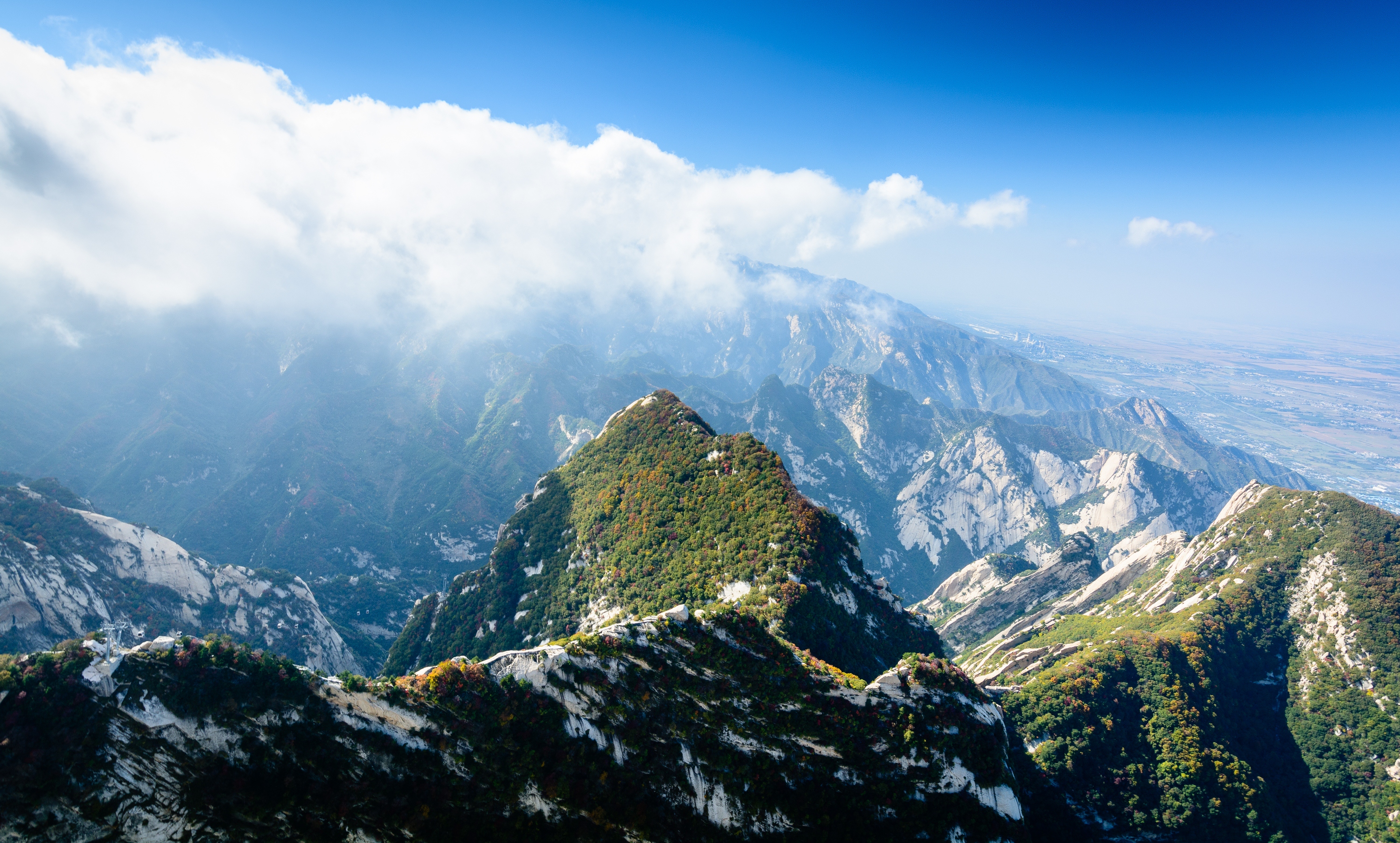https://nz.trip.com/moments/pu-county-1446107
2025 Pu County Travel Guide: Must-see attractions, popular food, hotels, transportation routes (updated in February)
今日天氣
Clear -8-6℃
All Moments About Pu County
Dongyue Temple, Puxian County, Shanxi | Discover Hidden Architectural Gems
| Discover hidden architectural gems. Dongyue Temple in Puxian County is a hidden gem that is often overlooked. It was built a long time ago and its architectural style combines features from several dynasties. As soon as you enter the temple, you can feel the strong sense of history. The buildings in the temple are arranged in a strict layout, with layers of buildings that are staggered and well-proportioned. 📸 The most worth visiting are the painted sculptures in the main hall. These sculptures are lifelike, and their colors are still bright despite the passage of time. There are also exquisite wood carvings and stone carvings, and every detail shows the superb skills of ancient craftsmen. 👀 In addition to appreciating the architecture and sculptures, the scenery of Baishan Mountain, where Dongyue Temple is located, is also very beautiful. Walking through it, you can feel as if you are far away from the hustle and bustle of the world. ⚠️ Travel tips: Some places in the temple are relatively narrow, so pay attention to safety when visiting. Respect cultural relics and local religious beliefs, and do not touch painted sculptures and other cultural relics at will.Gastronomic AdventuresLinfen Car Rental Tour | Niche Attraction: Dongyue Temple in Puxian County
Dongyue Temple was built a long time ago. As soon as you step into the temple, you will feel like you have traveled back in time to ancient times. 🌟Check-in Points: 1. Feiyun Tower: The tower is exquisitely shaped with upturned eaves and corners. Every carving is vivid and lifelike, making it a great place to take photos. 2. Eighteen Levels of Hell: The most unique part of Dongyue Temple. The interior is filled with lifelike colored sculptures that vividly depict scenes of hell, full of mystery. However, timid visitors may find it a bit scary. 3. Main Hall: The main hall is dedicated to the God of Mount Tai. The building is magnificent, allowing you to experience the charm of ancient architecture and the solemnity of religious culture. 📌Notes: 1. Respect religious beliefs and culture during your visit, and avoid making loud noises. 2. Some areas in the temple are narrow, so be careful when walking. 3. It is recommended to hire a tour guide to better understand the history and cultural connotations of Dongyue Temple. 🚗Transportation: It is recommended to drive. It is a short drive from Puxian County. There is a parking lot in front of the temple, making parking convenient.BOBBY WEBERPuxian Dongyue Temple | Ancient Architecture Through Time
| Ancient architecture through time. Puxian Dongyue Temple was built a long time ago, and most of the existing buildings are relics from the Yuan and Ming dynasties. As soon as you enter the temple, you can feel the strong historical atmosphere. 🌳 Attractions: Xinggong Hall: The main hall of Dongyue Temple, magnificent. The statues in the hall are exquisitely shaped, and although the colors have faded over time, you can still see the brilliance of the past. Eighteen Levels of Hell: The most unique place in Dongyue Temple! This is a group of Ming Dynasty wooden painted sculptures, with realistic shapes, depicting the scenes of hell vividly. Each statue has its own unique story, making people marvel at the superb skills of ancient craftsmen. Ancient cypress trees in the temple: The temple is full of towering ancient cypress trees, adding a touch of tranquility and mystery. 💡 Tips: Some places in the temple are relatively narrow, so pay attention to safety when visiting. Respect the monuments, and do not touch the cultural relics and painted sculptures.PAULINA TURNERPuxian Dongyue Temple | A Journey Through Time
| A journey through time. Let me share a temple with a rich history - Puxian Dongyue Temple, located on the top of Baishan Mountain, 2 km east of Puxian County, Linfen City, Shanxi Province. 🚗 Transportation: It is recommended to drive there, as there is a parking lot in front of the temple. You can also take a taxi from Puxian County, which is not expensive. Puxian Dongyue Temple was built a long time ago, and its architectural style combines the characteristics of several dynasties. As soon as you enter the temple, you will be greeted by an ancient atmosphere. The Tianqi Hall in the temple is magnificent, and the painted sculptures inside are lifelike, each one telling an ancient story. The most worth seeing here is the clay sculpture group of the "Eighteen Levels of Hell", which is realistic and vividly shows various scenes, making people marvel at the exquisite craftsmanship of ancient craftsmen. 📸 Photography tips: You can choose to take photos in the early morning or evening when the light is soft, and the photos will have a better atmosphere. Wearing ancient costumes and taking photos here will make you feel like you have traveled back in time. 🍱 Food: The food in Puxian is also not to be missed, such as lamb paomo, which is fresh and delicious; and the special oil cake, which is sweet and delicious.ElijahMacKay73Explore Linfen, Shanxi.
Visit the Dongyue Temple in Puxian County The Dongyue Temple, also known as the Dai Temple, originated from the ancient Chinese worship of Mount Tai. Over time, this belief spread and developed into a nationwide faith. After the Sui and Tang dynasties, regions with Mount Tai beliefs built Dongyue Temples, leading to the saying, "Dongyue Temples are found throughout the world." The Dongyue Temple is an ancient Chinese temple dedicated to the worship of the God of Mount Tai (the Great Emperor of Dongyue), who held a highly revered status in ancient society. Among the people, the belief in the Great Emperor of Dongyue was deeply rooted, as he was believed to control human destiny and determine life, death, and social status. As a result, many temples were built in his honor, serving as places for national worship and prayers for peace, prosperity, and longevity. The Dongyue Temple in Puxian County, Linfen, also known as the Baishan Temple, is a national key cultural relic protection unit. It is located 2 km east of Puxian County, Linfen, atop Baishan Mountain. This architectural complex holds significant historical and cultural value. The exact founding date of the Dongyue Temple in Puxian County is unknown. However, historical records indicate that since the Tang Zhenguan period, the temple has undergone multiple renovations and expansions. The existing structures were primarily rebuilt during the Yuan Yanyou period (1318 AD), with further repairs and additions during the Ming and Qing dynasties, resulting in the current architectural layout. The Dongyue Temple in Puxian County is a mixed Buddhist and Taoist temple, facing south, with a courtyard-style palace architecture. It consists of the Dongyue Palace, Hell, Huaqing Palace, Taiwei Temple, and Seventy-two Divisions. Along the central axis from south to north are the Changhong Path, General Shrine, Royal Horse Hall, Lianyun Hall, Mountain Gate, Heaven Tower, Lingxiao Hall, Heavenly King Hall, Music Tower, Incense Pavilion, Offering Pavilion, Main Hall of the Palace, Houtu Shrine, Changyan Palace, Qingxu Palace, Dizang Shrine, and Hell. There are over 300 pavilions, towers, and corridors. The Offering Pavilion's column bases are relics from the Jin dynasty, the Main Hall of the Palace is a Yuan dynasty structure, and the remaining halls, towers, and corridors are relics from the Ming and Qing dynasties. The Dongyue Temple in Puxian County, Linfen, differs from other Dongyue Temples nationwide, with its most unique feature being the depiction of the eighteen levels of hell. The hell world here is vividly portrayed... Shanghai, ChinaGalaxyGlider_345"One Spirit, Two Wonders, Three Treasures, Four Uniques" - the most powerful palace of the Eastern Emperor.
📍Address: Located at 265 Puyi East Street, Puxian County, the location is excellent, built by the mountain, the feng shui should be very good. The creation date is not recorded in history, but it is said that it was already in the fifth year of Jin Taihe (about 1205). It was destroyed by an earthquake during the Yuan Dynasty and was rebuilt in 1318. 🚗Transportation: Drive by yourself. In the off-season, we can drive directly to the door and park (the management is good, they will ask you to park your car facing outwards, neatly). It is said that during the peak season, the car is parked at the foot of the mountain and there is a special battery car to go up. 👍️Highlights: There are both heaven and hell in the entire temple, which is very large, and there is also a part of the world in the middle. There is a viewing pavilion, which is a place for people with status to watch operas and discuss affairs. There is also hell behind, including Yincang, Dizang Temple, and the Eighteen Layers of Hell. In addition, Dongyue Temple also has the saying of "One Spirit, Two Wonders, Three Treasures, Four Uniques" locally. One Spirit: It means that it is the most effective to make a wish and ask for a god here. Two Wonders: Thousand-year-old ancient yew and cypress. Both are thousand-year-old trees from the Tang Dynasty. Three Treasures: Eight Immortals Celebrating Longevity, Sunny Rain Monument, Jin Dynasty Stone Carving. They are all rare treasures, exquisite and beautiful. Four Uniques: Ring-shaped temple, high-altitude corridor, product-shaped stage, and sound rhyme around the sky. The architectural form is distinctive, and the spatial layout is also different from other temples. Its historical value and artistic value are unparalleled.Isla_Wild3rThe Dongyue Temple in Puxian is mysterious and full of ancient charm
In the Dongyue Temple in Puxian, Linfen, there is an underworld, commonly known as the Eighteen Levels of Hell. Its large scale and comprehensive content are rare in the country. Initially worried about being scared, but the strong sunlight on this day actually shone a bit into the hell after descending eighteen steps. Although there were not many tourists, having someone nearby made it less frightening. This Dongyue Temple is located on the top of a mountain, built around the mountain, and its age is untraceable. There are two catalpa trees from the Tang Dynasty in the temple, lush and green. The wood carvings, clay sculptures, opera stages, and pavilions are all artistic treasures. Viewed individually, they feel very ancient and charming. Legend has it that this place is also the palace of the Great Emperor of the East, who governs the cycle of life and death in the human world. Therefore, there are also seventy-two departments and various regulations and punishments, which envelop this place in a mysterious and uneasy atmosphere.BriseOceanique222Ula Relics | Linfen · One Hour Climb to Pay Homage to the Eastern Peak
| Linfen · One Hour Climb to Pay Homage to the Eastern Peak. Baishan Eastern Peak Temple, located at the top of Baishan in Puxian, is a religious architectural complex that integrates history, culture, and art. At the southern end of the central axis, the imposing shadow wall bears the four powerful characters 'Pushan Scenic Spot,' indicating the entrance to a solemn holy land. From the shadow wall, heading north along the Changhong Steps, General's Shrine, Royal Horse Hall, Lotus Cloud Hall, through the mountain gate, Paradise Tower, Lingxiao Hall, Heavenly King Hall, Music Tower, Fragrance Pavilion (Council Hall), Offering Pavilion, all the way to the Main Hall of the Palace, Houtu Shrine (Harem), Changyan Palace, Qingxu Palace, Dizang Shrine, Hell, there are more than 300 pavilions and towers in total, with a rigorous layout and magnificent momentum, resembling a miniature Potala Palace. The Offering Pavilion's column bases are relics from the Jin Dynasty, and the Main Hall of the Palace is a masterpiece of Yuan Dynasty architecture. The other halls, towers, corridors, etc., are all precious relics from the Ming and Qing Dynasties. Each building reveals the exquisite craftsmanship and profound understanding of ancient culture by the artisans. The carvings are intricate and full of ancient charm, making one feel as if they have traveled through time back to the era of reverence for gods and heaven. Upon departure, the words of the county magistrate borrowing the mouth of the Eastern Peak Emperor to warn the people to protect the mountains and forests and to revere nature still echo in the ears: 'If you cut down my mountains and forests, I will not speak, but if you harm your life, you will not escape.' Every word is sonorous and meaningful, making people reflect on the beauty of the ancient temple while also pondering the way of harmonious coexistence between humans and nature. 【Travel Advice】 - Transportation: There is no direct public transportation to Baishan Eastern Peak Temple. Visitors can take the small yellow bus to Xiaoxitian, and then hike for about 45 minutes. The return trip is the same, which is quite physically demanding, so visitors are advised to prepare for physical exertion. - Tickets: Full price ticket is 28 yuan, with high cost performance, suitable for tourists interested in history and culture. - Opening Hours: 8:30-18:00 (last entry at 17:30), visitors are advised to plan their itinerary reasonably.Isabella7 Thompson~1Visiting Linfen | Remember to bring this place with you when you go to Xiaoxitian
The Dongyue Temple in Puxian County is said to have been built during the Tang Dynasty, and has been repaired and expanded during the Song, Yuan, Ming, Qing and other dynasties. It mainly worships the Taoist Eastern Emperor, who is in charge of the book of life and death, so most of the interior sculptures are themed around the underworld. 📍Attraction Address: Shanxi Linfen-Puxian County 🚗Attraction Transportation: It takes about an hour's drive from Linfen city area to Dongyue Temple. After arriving at the scenic area, you need to switch to the scenic area's shuttle to go up the mountain, and the tour time is 0.5~1 hour. 👍️Must-visit Attractions: The overall architecture is built according to the mountain terrain, with clear layers, the main hall, side halls, bell and drum towers, and stage are all old buildings that have been preserved. The clay sculptures inside are not as shocking as those in Xiaoxitian, but they are also worth seeing. I only took photos of the more exquisitely made ones; I didn't take pictures of the rough ones in the hell mansion. 🎟️Ticket Information: I joined a day tour group departing from Linfen city area. The itinerary was Xiaoxitian in the morning and Dongyue Temple in the afternoon, two attractions in one day, and the total cost was over 💰200 (including ticket price). 💗Other tips: The mountain is very cool, and the view from the top is also quite good.Oscar~HayesThe most intact early Dongyue Temple in Pu County, Linfen, Shanxi is still in existence
Dongyue Temple is a Taoist temple built to worship the god of Mount Tai - Dongyue Dadi, also known as Huang Feihu. In Taoist legend, Dongyue Dadi is in charge of the underworld, making him one of the most revered deities. There are many Dongyue Temples across the country, and the one located on the top of Baishan, east of Pu County city, is one of the oldest temples. It has been repaired many times since the Tang Dynasty and had already taken shape, but its exact construction date is unverifiable to this day. The exact year of the temple's establishment is unknown. According to the 'Pu County Annals' and inscriptions within the temple, since the Tang Dynasty's Zhenguan era, the temple has been renovated repeatedly. By the Song and Jin dynasties, the temple already had a considerable scale. It was destroyed by an earthquake during the Yuan Dynasty's Pingyang period, and was expanded and reconstructed multiple times during the Ming and Qing dynasties, reaching its current size. The existing structures include the Xianting column bases from the Jin Dynasty, the Xinggong main hall from the Yuan Dynasty, and the rest of the halls, towers, and corridors are relics from the Ming and Qing dynasties. The Dongyue Temple faces south and covers a total area of 20,000 square meters. It consists of five parts: Dongyue Xinggong, Hell, Huaqing Pool, Taiwei Temple, and others. Along the central axis from front to back are the shadow wall, ramp, mountain gate, Heaven Tower, Lingxiao Hall, Heavenly King Hall, Music Tower, Xiangting Pavilion, Xianting Pavilion, Xinggong Main Hall, Hou Tu Shrine, Qingxu Palace, Dizang Shrine, and Hell Mansion. There are more than 300 pavilions, towers, and galleries in total.GlamourGaloreLinfen is truly an underestimated historical city in Shanxi
🌟 It is often said that 'to see the cultural relics, look to Shanxi'📜, but Linfen, this underestimated historical city🏯, is definitely one of the dazzling jewels✨! It is the birthplace of the Chinese nation🌱, the capital of numerous dynasties🏛️, and every brick and tile here tells a story of a thousand years📜. 1️⃣🏯 The Feihong Pagoda of Guangsheng Temple🌈 is exquisitely beautiful, with glittering glazed tiles💎, as if traveling through time🕰️. The Yuan Dynasty murals in the Water God Temple🖼️ are so detailed that they leave one in awe👀. 2️⃣📸 Visiting Xiaoxitian🏞️ is like entering a hall of sculpture art🎭. The hanging sculptures from the Ming and Qing dynasties🗿 are intricate yet not cluttered, truly heart-stirring✨. 3️⃣🎞 The Jin State Museum🏛️, with its chariot and horse pits🐎 that predate the Terracotta Army of Emperor Qin Shi Huang by 602 years, and the burial site of the Jin state rulers🕳️, seems to echo with the voices of history👂. 🌟 A 3-day and 2-night travel guide to Linfen📝, taking you through a thousand years🕰️, to experience the profound history and cultural heritage📚! 𝐃𝐀𝐘 1️⃣: Drum Tower🕰️ - Dongyang Houtu Temple🏯 - Wangqu Dongyue Temple🏛️ - Weicun Niuwang Temple🐂 - Guangsheng Temple🏞️ 𝐃𝐀𝐘 2️⃣: Xiaoxitian🏞️ - Puxian Dongyue Temple🏛️ - Huozhou Drum Tower🕰️ - Wa Huang Temple🏯 - Dayun Temple🏞️ 𝐃𝐀𝐘 3️⃣: Linfen City Museum🏛️ - Fencheng Ancient Buildings🏯 - Jin State Museum🏞️ - Da Bei Yuan🏞️ 🚗 The attractions are scattered🗺️, but renting a car for a self-driving tour is the best way to go!🚘 Freely navigate the streets of Linfen🛣️, and feel the unique charm of this city🌆. 🍜 A food guide is also essential!🍽️ Zhajiang noodles🍜, oil cakes🥞, soft-shelled turtles🐢... each bite is the taste of Linfen👅, sure to leave you with endless aftertastes!😋 Come to Linfen🏞️, and join me in exploring this treasure city forgotten by time!🎉🎈JASPER JOHNSPathfinder Episode 10: Dongyue Temple in Linfen
Heaven is the small western sky, hell is Dongyue Temple. The Dongyue Temple mentioned here is the Dongyue Temple in Linfen. From Linfen to the west, 70 kilometers along the mountain road, there is a Dongyue Temple standing alone on the top of the mountain. The most famous thing in the rivers and lakes is its eighteen layers of hell statues, but it is a modern renovated thing, in terms of artistic value, it is far less than other ancient relics, the details are too popular, and the expressions are mask-like. The highlights are a wooden pavilion and a hall in the main channel, the carved beams and painted columns are heavy in style, the ridge and cross beams are decorated with glazed statues and wood-carved characters and animals, which is interesting. The eighteen hells yamen, only the official position is the most prosperous, the door lintel is full of blessing red bands, it seems that the gene of promotion and wealth is still deeply rooted in people's hearts.EVELYN MCCARTHY

Recommended Themes

Guides
358889 post

Attractions
307191 post

Recommended Destinations

Taiyuan
761 post

Yuncheng
108 post

Mount Hua
15 post
Post
Popular Trip Moments
Dongyue Temple, Puxian County, Shanxi | Discover Hidden Architectural Gems | Linfen Car Rental Tour | Niche Attraction: Dongyue Temple in Puxian County | Puxian Dongyue Temple | Ancient Architecture Through Time | Puxian Dongyue Temple | A Journey Through Time | Explore Linfen, Shanxi. | "One Spirit, Two Wonders, Three Treasures, Four Uniques" - the most powerful palace of the Eastern Emperor. | The Dongyue Temple in Puxian is mysterious and full of ancient charm | Ula Relics | Linfen · One Hour Climb to Pay Homage to the Eastern Peak | Visiting Linfen | Remember to bring this place with you when you go to Xiaoxitian | The most intact early Dongyue Temple in Pu County, Linfen, Shanxi is still in existence | Linfen is truly an underestimated historical city in Shanxi | Pathfinder Episode 10: Dongyue Temple in Linfen
Recommended Attractions at Popular Destinations
Bangkok attraction near me | Manila attraction near me | Tokyo attraction near me | Taipei attraction near me | Hong Kong attraction near me | Seoul attraction near me | Kuala Lumpur attraction near me | Los Angeles attraction near me | Shanghai attraction near me | New York attraction near me | Shenzhen attraction near me | Osaka attraction near me | Singapore attraction near me | London attraction near me | Guangzhou attraction near me | San Francisco attraction near me | Beijing attraction near me | Macau attraction near me | Bali attraction near me | Jakarta attraction near me | Paris attraction near me | Ho Chi Minh City attraction near me | Istanbul attraction near me | Phuket attraction near me | Chicago attraction near me | Seattle attraction near me | Toronto attraction near me | Orlando attraction near me | Cebu attraction near me | Chiang Mai attraction near me
Popular Restaurants in Pu County
家和面馆 | 新疆大盘鸡 | 聚香阁 | 麦肯基(蒲县店) | 百思富休闲餐厅(蒲县店) | JIN YANG SHI FU | 辣欢天自助涮烤店(蒲县店) | SHA GUO MIAN | 福水源面馆 | 心愿板栗 | 客家面馆(锦绣大街店) | 重庆鸡公煲(蒲县店) | LE FU OU PIN DAN GAO DIAN | 盛唐火锅(盛世锦绣店) | 鑫宏饺子馆 | 心愿板栗(蒲县店) | 加拿大慕蓝卡烘焙坊(蒲县店) | 牛肉丸子面 | 提拉米酥烘焙坊 | 蒲县乔家湾喜盛高一羊肉锅店 | 大众小吃 | 余香面馆 | 蒲县久焖私房牛肉面 | 老白家十凤牛肉丸子面 | 吕氏新疆大盘鸡 | 山城香辣虾火锅(祥瑞小区店) | 老百姓面馆(蒲伊东街店) | 和谐饭店 | 新千年西饼屋 | 创艺烘焙坊
Popular Ranked Lists
Top 13 Best Things to Do in Tawau Division | Top 4 Best Things to Do in Tongliao | Top 3 Premium Hotels in Chhattisgarh | Popular Luxury Hotels Near Healdsburg | Top 16 Local Restaurants in Langkawi | Popular Best Things to Do in Mauritius | Top 20 Local Restaurants in Koh Samui | Top 12 Local Restaurants in Hakone | Popular Best Things to Do in Ghajnsielem | Top 11 Local Restaurants in Phu Quoc Island | Popular Best Things to Do in Shaoyang | Top 15 Local Restaurants in Taipei | Top 19 Local Restaurants in Xi'an | Popular Best Things to Do in Qianwei County | Popular Best Things to Do in Daocheng | Top 3 Luxury Hotels in Belgrade | Top 5 Best Things to Do in Huaihua | Top 3 Best Things to Do in Hainan Tibetan Autonomous Prefecture | Top 6 Best Things to Do in Daxing'anling | Top 19 Local Restaurants in Istanbul | Popular Local Restaurants in Beijing | Top 5 Best Things to Do in Ulanqab | Top 4 Best Things to Do in Shaoguan | Top 7 Best Things to Do in Phi Phi Islands | Popular Luxury Hotels Near Ito | Popular Best Things to Do in Zhaoqing | Popular Luxury Hotels Near Shiojiri | Popular Luxury Hotels in Nouvelle-Aquitaine | Top 9 Local Restaurants in Nha Trang | Top 4 Best Things to Do in Jiangshan
Payment Methods
Our Partners
Copyright © 2025 Trip.com Travel Singapore Pte. Ltd. All rights reserved
Site Operator: Trip.com Travel Singapore Pte. Ltd.
Site Operator: Trip.com Travel Singapore Pte. Ltd.